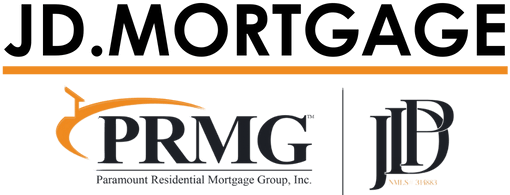
Second Mortgage solutions can unlock home equity without disturbing a great first‑mortgage rate. The JD.Mortgage team at PRMG compares closed‑end seconds and HELOCs, models payment strategies, and structures approvals to match your timeline and goals. Contact the JD.Mortgage team for a customized second‑mortgage plan.
Second Mortgage
Second Mortgage financing lets you tap equity while preserving the favorable terms on your existing first mortgage. Instead of replacing your entire loan, you add a new junior lien—either a fixed closed‑end second or a revolving HELOC—to fund renovations, consolidate debt, launch a business, or purchase an investment property. As a hybrid lender and broker serving borrowers in 49 states (excluding NY), the JD.Mortgage team at PRMG brings multiple lenders, guidelines, and rate sheets to the table so you see broader options in one place. Start your second‑mortgage conversation with our team.
Second Mortgage vs. HELOC: What’s the Difference?
Both products are “seconds,” but they behave differently. A closed‑end second provides a single disbursement with a fixed rate and fixed payment schedule—great for defined projects or debt payoff plans. A HELOC (Home Equity Line of Credit) acts like a credit card secured by your home, offering a draw period with interest‑only minimums and variable rates; you can reuse funds as you repay. We’ll help you compare flexibility, risk, and cost to determine which path aligns with your cash‑flow and risk tolerance. Learn more about HELOCs or ask us for a side‑by‑side.
When a Second Mortgage Makes Strategic Sense
A second mortgage can make sense when your first mortgage carries a great rate you don’t want to lose, or when a full cash‑out refinance would be costlier due to rate changes or new LLPAs. Common use cases include home improvements, debt consolidation to lower total interest, education funding, business capital, or a down payment on a rental property. The key is matching loan structure to outcome—term length, fixed vs. variable, draw access, prepayment flexibility, and tax considerations. Preview payments, then return to the top to get organized.
How Much Can I Borrow on a Second Mortgage?
Maximum combined loan‑to‑value (CLTV) depends on product, occupancy, property type, and credit risk. Primary residences often allow higher CLTV than second homes or investments, while condos, manufactured housing, or unique properties may reduce leverage. We’ll calculate your usable equity, target CLTV, and expected pricing tiers, then structure scenarios that keep your total monthly obligations within DTI limits. Request a CLTV review tailored to your goals.
Qualification Basics: Credit, Income, and Reserves
Underwriting reviews credit profile, payment history, income stability, and reserves (savings left after closing). Strong credit and healthy reserves typically improve pricing and approval odds, but we work with a wide range of scenarios—including complex income for self‑employed borrowers. As a hybrid lender and broker, we source programs across investors to help you find the right fit. Back to top to begin your checklist.
Closed‑End Second: Pros and Cons
Pros: fixed rate and payment, amortizing schedule, predictable payoff, single disbursement for focused projects. Cons: less flexible after funding and potential prepayment penalties depending on program. Ideal when you know your cost and timeline. Ask for fixed‑rate options and a breakeven analysis.
HELOC: Pros and Cons
Pros: flexible draws, interest‑only minimums during draw, reuse of line as you repay. Cons: variable rates can change your payment, and the repayment phase converts to amortizing payments that may be higher. Ideal when expenses are staggered or when you want an emergency “liquidity backstop.” Explore HELOC programs and request a HELOC playbook.
Debt Consolidation with a Second Mortgage
Used responsibly, a second mortgage can simplify high‑interest debts into one lower‑rate, tax‑advantaged payment (consult your tax advisor). We’ll map total interest saved, payoff timelines, and risk trade‑offs (e.g., converting unsecured debt into secured). If consolidation is the goal, we’ll also discuss spending safeguards so the improvement sticks. Estimate scenarios and request a payoff strategy.
Home Improvements & ROI Planning
Remodels, additions, or energy upgrades can increase comfort and potential resale value. We’ll coordinate second‑mortgage funding in phases to match contractor milestones and material schedules, and we’ll analyze likely appraisal impacts so you don’t over‑improve relative to the neighborhood. Back to the top or ask for a renovation budget map.
Second Mortgage for Real Estate Investing
Equity in your primary residence can seed down payments for rental properties. We’ll compare closed‑end second vs. HELOC for acquisition timing, reserves, and DSCR expectations on the future rental. If you plan frequent buys, flexible line access may be more useful; for one‑time acquisitions, fixed seconds can lock costs. Review DSCR loans and request an investor plan.
Appraisal and Valuation Considerations
Some second‑mortgage programs require a full appraisal, while others permit AVMs or drive‑by valuations depending on risk. Renovations, accessory dwelling units, or unique property features may trigger a full appraisal. We’ll guide you on prep, comps, and documentation to support value. Return to the top to keep moving.
Rate, Cost, and Term Strategy
We model the relationship between interest rate, points, CLTV, and term length to pinpoint your breakeven. For closed‑end seconds, we’ll examine 10‑, 15‑, and 20‑year terms to balance monthly cost and lifetime interest; for HELOCs, we’ll outline draw and repayment impacts with rate‑change sensitivity. Run quick estimates and request a custom scenario.
Payment Management and Prepayment Flexibility
Second mortgages offer strategies for paying down principal faster when cash flow allows. We’ll set up optional payment cadence (biweekly, round‑ups, principal‑only) and flag any prepayment penalties. HELOCs may allow targeted principal reductions when rates rise. Back to top or ask for a prepayment plan.
Tax Considerations (Talk to Your Advisor)
Interest deductibility on second mortgages and HELOCs may depend on use of funds (e.g., home improvements). Always consult a tax professional to confirm eligibility. We’ll provide clear documentation of fund use to support your conversations with a CPA. Request a documentation checklist to stay organized.
Qualification Checklist
To move efficiently from consult to approval, gather: valid ID, recent mortgage statement(s), homeowners insurance info, income documents (W‑2/1099, pay stubs, or business financials), two months of asset statements, and an estimated project budget if applicable. If self‑employed, include business returns and year‑to‑date P&Ls. Back to top or ask for a personalized list.
Common Questions About Second Mortgage Risk
Any junior lien carries risk—missed payments can lead to default. Variable‑rate HELOCs can raise payments when rates move. We front‑load scenario modeling to stress‑test payment ranges and ensure the new structure supports—not strains—your budget. See our process and talk with a strategist.
Why Work with the JD.Mortgage Team at PRMG?
We’re a hybrid lender and broker, which means broader access to programs and competitive pricing under one roof. You’ll get clear side‑by‑side comparisons (closed‑end second vs. HELOC, points vs. no points, short vs. long term), organized status updates (Tuesdays/Fridays), and responsive guidance from first call to funding. Our goal is alignment: numbers, timeline, and risk comfort—no pressure, no gimmicks. Visit our homepage or connect now.
Second Mortgage vs. Cash‑Out Refinance: Choosing the Right Path
Sometimes a full cash‑out refi wins—like when today’s rate is near your existing one and you want one simple payment. Other times, preserving your low first‑mortgage rate and adding a smaller second reduces lifetime cost. We’ll calculate both and recommend the efficient path. Explore refinance options and ask for a dual‑path analysis.
Timeline: From Strategy to Funding
Typical timelines range from a couple of weeks to about a month, depending on valuation type, complexity, and title work. We’ll identify any HOA, survey, or subordination items up front to prevent delays. Expect clear milestones and proactive communication. Back to top or get your timeline.
Responsible Borrowing and Long‑Term Fit
We encourage “purpose‑built” borrowing: define the why, the cost, the payoff, and the exit before funding. We’ll build a written plan that considers contingencies (rate movement, income changes) and ensures your second mortgage supports your broader financial picture. Test your plan and request a written strategy.
Explore Additional Loan Options
The JD.Mortgage team also supports a full lineup of programs: Conventional, Loan Options, FHA, Home Purchase, Main, Jumbo, Calculator, Mortgage Process, VA, Refinance, USDA, Construction Loans, Contact/General Inquiry, HELOC, Non‑QM (including DSCR, Bank Statement, and ITIN), Second, and Reverse. Back to top to begin.
Frequently Asked Questions: Second Mortgage
Is a second mortgage better than a cash‑out refinance?
It depends on your existing first‑mortgage rate, the funds you need, and total cost. If your first‑mortgage rate is much lower than current market rates, a second can be more efficient. Request a dual‑path analysis.
Do second mortgages have fixed or variable rates?
Closed‑end seconds are generally fixed; HELOCs are typically variable during the draw. We’ll model payments in both structures so you can choose confidently. Compare HELOCs.
What CLTV can I expect?
CLTV depends on occupancy, property type, credit, and program. We’ll calculate usable equity and align it to your goals. Ask for a CLTV review.
Will I need an appraisal?
Some programs allow AVMs or exterior‑only appraisals; others require full appraisals. We’ll advise based on your profile and property. Back to top.
Are there prepayment penalties?
Many seconds allow extra principal payments without penalty, but some programs include early‑payoff fees. We’ll disclose terms up front. Get details.
Is interest tax‑deductible?
Possible when funds are used for qualified home improvements; consult your tax advisor for specifics. We provide documentation to support your review. Request a documentation set.

